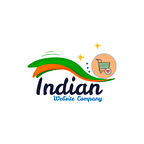How Do Dynamic Websites Handle User Interactions and Input?
In the ever-evolving landscape of website development, dynamic websites stand out for their ability to engage users through interactive features and personalized content. Understanding how dynamic websites handle user interactions and input is crucial for businesses seeking to leverage the power of digital engagement to drive growth and enhance user experience. Moreover, considering dynamic website cost in India adds an additional layer of complexity to the equation. In this comprehensive guide, we’ll delve into the intricacies of user interaction management on dynamic websites while exploring the factors influencing dynamic website cost in India.
Unraveling User Interactions on Dynamic Websites
Dynamic websites excel in facilitating seamless user interactions and input, leveraging server-side scripting and databases to deliver personalized experiences and respond dynamically to user actions. Here’s a closer look at how dynamic websites manage user interactions:
1. User Registration and Authentication
Dynamic websites often feature user registration and authentication systems, allowing users to create accounts, log in, and access personalized content and features. Through secure authentication mechanisms, dynamic websites ensure that user data is protected and accessible only to authorized individuals.
Visit also: What are Some Common Challenges in Ecommerce Website Development
2. Forms and Input Handling
Dynamic websites utilize forms to collect user input, such as contact information, feedback, and inquiries. Advanced form validation techniques ensure that user-submitted data is accurate and meets specified criteria, enhancing data integrity and user experience. Additionally, dynamic websites leverage server-side scripting to process form submissions, validate input, and execute custom logic based on user actions.
3. Personalization and Customization
Dynamic websites employ user profiling and data segmentation techniques to deliver personalized content and recommendations tailored to individual preferences and behavior. By analyzing user interactions and input, dynamic websites adapt content, recommendations, and user interfaces dynamically, optimizing engagement and satisfaction.
4. Interactive Features and Functionality
Dynamic websites leverage interactive features such as sliders, carousels, accordions, and interactive maps to enhance user engagement and interactivity. These elements enable users to explore content, navigate seamlessly, and interact with multimedia assets, fostering a rich and immersive browsing experience.
5. Real-Time Updates and Notifications
Dynamic websites utilize real-time communication protocols and server-side push mechanisms to deliver instant updates, notifications, and alerts to users. Whether it’s breaking news, product updates, or personalized recommendations, dynamic websites keep users informed and engaged with timely and relevant information.
6. E-commerce and Transactional Capabilities
Dynamic websites integrate e-commerce platforms, shopping carts, and payment gateways to facilitate online transactions and purchases. Through dynamic pricing, inventory management, and order processing, dynamic websites provide a seamless and secure shopping experience for users, driving conversions and revenue generation.
Factors Influencing Dynamic Website Cost in India
While dynamic websites offer unparalleled flexibility and functionality, dynamic website cost in India is influenced by various factors, including:
1. Complexity of Functionality
The complexity of desired features and functionality significantly impacts dynamic website cost in India. Advanced interactive elements, e-commerce integration, user authentication systems, and real-time communication capabilities entail higher development costs due to the expertise and resources required.
2. Customization and Personalization
Customization and personalization requirements drive up dynamic website cost in India, as developers need to tailor the website’s architecture, design, and functionality to align with specific business objectives and user preferences. Custom development work and integration with third-party systems contribute to increased costs.
3. Scalability and Performance
Scalability and performance considerations influence dynamic website cost in India, particularly for websites expecting high traffic volumes and rapid growth. Investing in scalable infrastructure, load balancing, and performance optimization measures incurs additional costs but ensures smooth operation and user satisfaction.
4. Integration with External Systems
Integration with external systems, such as CRMs, ERPs, payment gateways, and social media platforms, adds complexity to dynamic website development and increases dynamic website cost in India. Seamless integration requires robust APIs, data synchronization mechanisms, and compatibility testing, all of which contribute to development expenses.
5. Security and Compliance Requirements
Addressing security vulnerabilities and compliance requirements, such as GDPR and PCI DSS, is paramount for dynamic websites, particularly those handling sensitive user data and financial transactions. Implementing encryption, access controls, and regular security audits adds to dynamic website cost in India but ensures data protection and regulatory compliance.
Conclusion
In the dynamic realm of website development, understanding how dynamic websites handle user interactions and input is essential for delivering engaging user experiences and driving business growth. From user registration and authentication to interactive features and real-time updates, dynamic websites leverage advanced technologies and techniques to foster meaningful interactions and enhance user engagement.
However, it’s crucial to consider dynamic website cost in India when embarking on a dynamic website development project. By evaluating factors such as functionality complexity, customization requirements, scalability considerations, integration needs, and security concerns, businesses can make informed decisions and invest wisely in dynamic website development initiatives. With the right approach and expertise, dynamic websites can serve as powerful tools for achieving business objectives, captivating audiences, and staying ahead in today’s competitive digital landscape.
Visit also: Helpful Tips for a Conversion Friendly Ecommerce Website Development
